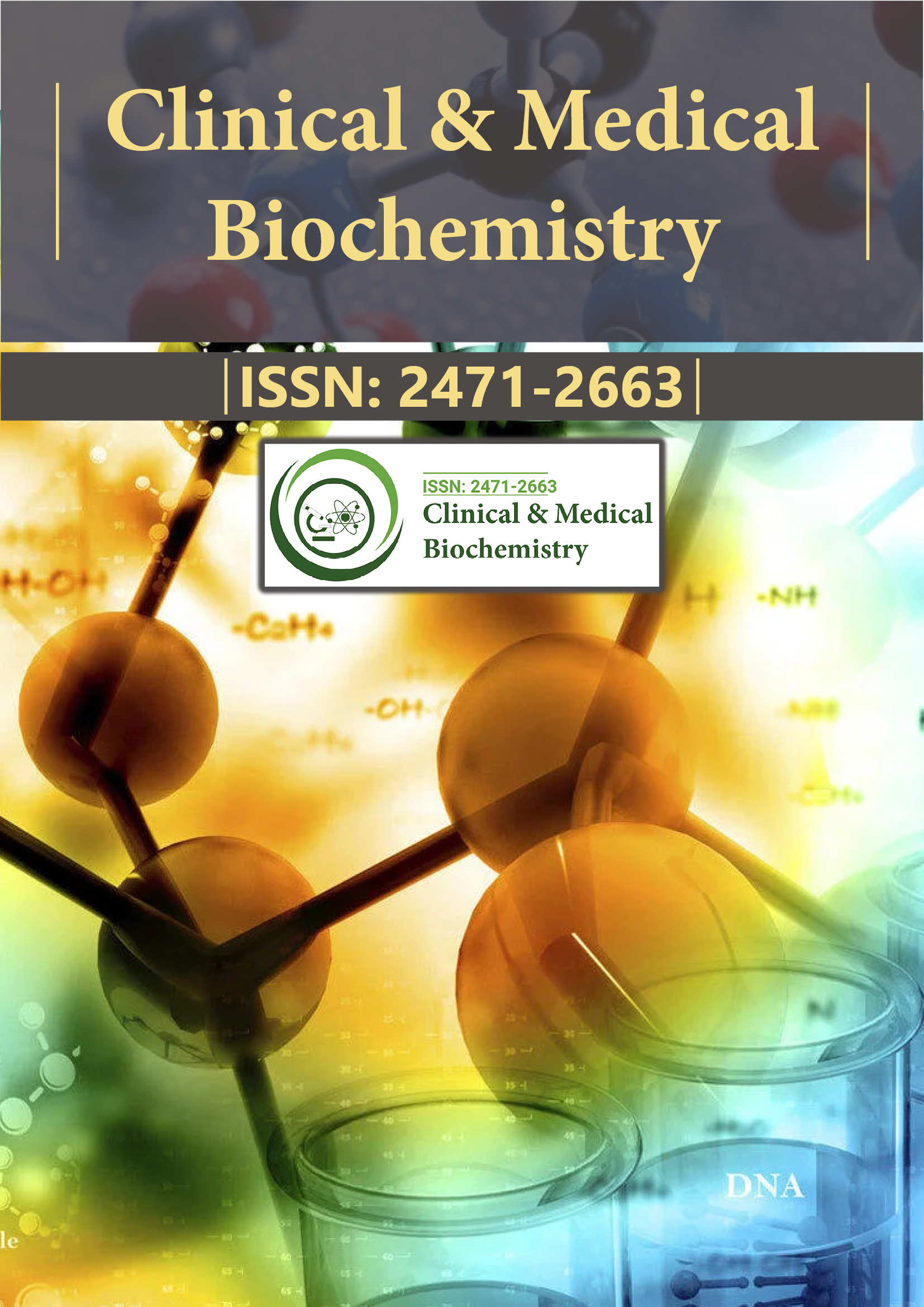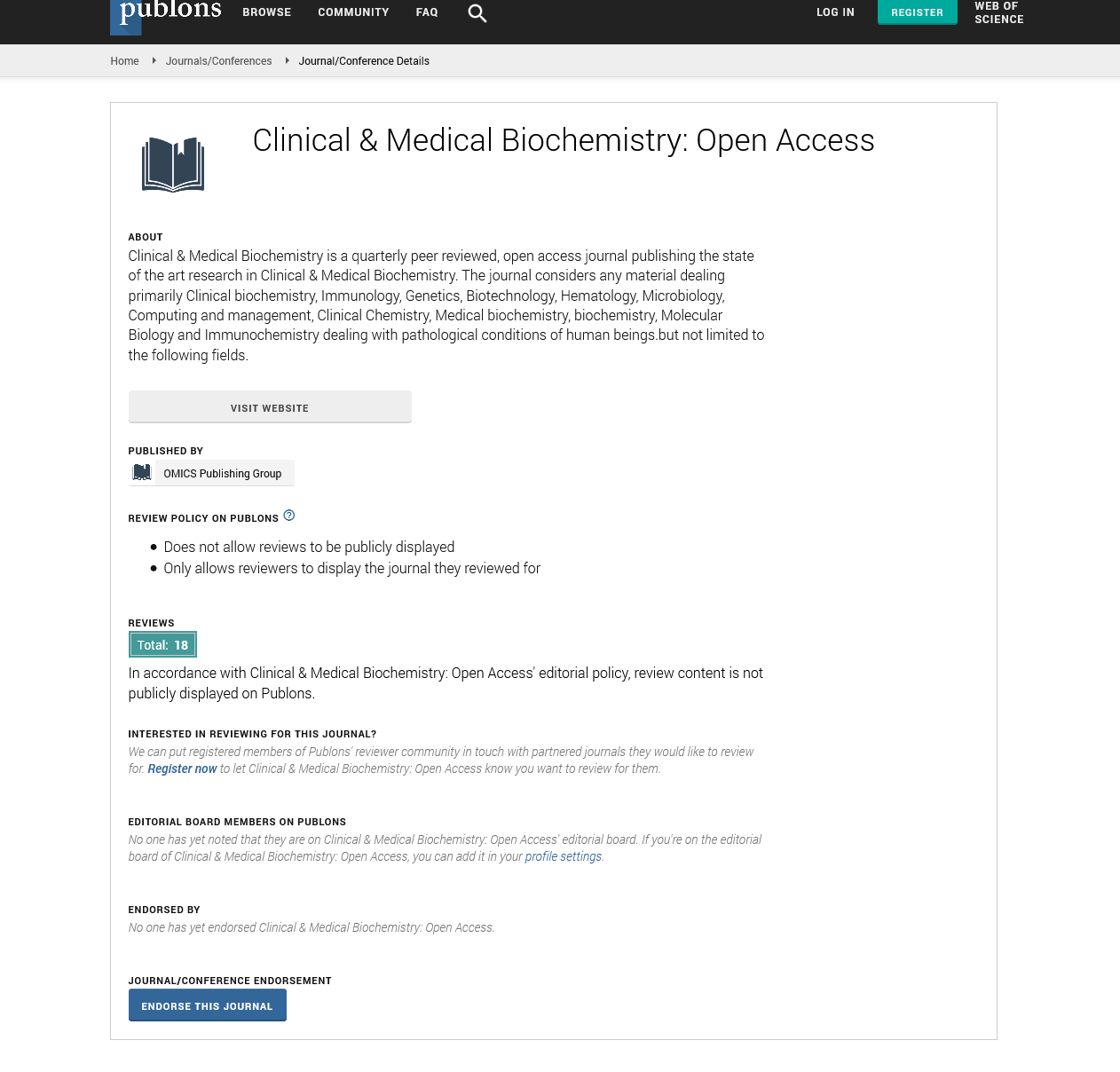Indexed In
- RefSeek
- Directory of Research Journal Indexing (DRJI)
- Hamdard University
- EBSCO A-Z
- OCLC- WorldCat
- Scholarsteer
- Publons
- Euro Pub
- Google Scholar
Useful Links
Share This Page
Journal Flyer

Open Access Journals
- Agri and Aquaculture
- Biochemistry
- Bioinformatics & Systems Biology
- Business & Management
- Chemistry
- Clinical Sciences
- Engineering
- Food & Nutrition
- General Science
- Genetics & Molecular Biology
- Immunology & Microbiology
- Medical Sciences
- Neuroscience & Psychology
- Nursing & Health Care
- Pharmaceutical Sciences
Commentary - (2024) Volume 10, Issue 1
Role of Stem Cell Therapies and their Potential Medical Applications
Robert Teasell*Received: 22-Dec-2023, Manuscript No. CMBO-24-24549; Editor assigned: 26-Dec-2023, Pre QC No. CMBO-24-24549 (PQ); Reviewed: 10-Jan-2024, QC No. CMBO-24-24549; Revised: 17-Jan-2024, Manuscript No. CMBO-24-24549 (R); Published: 24-Jan-2024, DOI: 10.35841/2471-2663.23.10.210
Description
Stem cell therapies have developed as transformative tools in the field of regenerative medicine, holding immense capacity for treating a variety of medical conditions and injuries. These therapies attach the unique properties of stem cells to repair, replace, or regenerate damaged tissues and organs. The journey of stem cell research has taken us from initial discoveries in the laboratory to the development of cutting-edge treatments that may revolutionize the way we approach certain diseases and injuries. At the core of stem cell therapies lies the remarkable flexibility of stem cells themselves. Stem cells are undifferentiated cells with the capacity to develop into specialized cell types. This ability makes them invaluable for regenerative purposes, as they can differentiate into various cell types depending on the specific needs of the tissue or organ being targeted. Embryonic stem cells, derived from embryos, were among the first types of stem cells studied due to their pluripotent nature—meaning they can differentiate into any cell type in the body. While embryonic stem cells opened new avenues in research, ethical concerns surrounding their derivation led scientists to explore alternative sources of stem cells.
Induced Pluripotent Stem Cells (iPSCs) represent a development in the field. iPSCs are created by reprogramming adult cells, such as skin cells, to revert to a pluripotent state, essentially mimicking embryonic stem cells without the need for embryos. This innovation not only addresses ethical concerns but also allows for the generation of patient-specific stem cells, reducing the risk of immune rejection when used in therapeutic applications. Stem cell therapies are being investigated for a wide range of medical conditions, from degenerative diseases to traumatic injuries. In the field of cardiology, for example, stem cells have shown capacity in repairing damaged heart tissue after a heart attack. Mesenchymal Stem Cells (MSCs), which can differentiate into bone, cartilage, and fat cells, are being explored for their regenerative potential in orthopedics, addressing conditions like osteoarthritis and fractures.
Neurological disorders, including Parkinson's and Alzheimer's diseases, are also subjects of intense study in the world of stem cell therapies. Researchers are investigating the use of stem cells to replace damaged neurons and restore lost neurological function. While the challenges in navigating the complexities of the central nervous system are significant, the potential impact on patients with these debilitating conditions is a driving force in advancing stem cell research.
Type 1 diabetes, characterized by the destruction of insulinproducing beta cells in the pancreas, is another area where stem cell therapies provide hope. By differentiating stem cells into insulin-producing cells, researchers aim to provide a potential cure or long-term treatment for individuals with this chronic condition. The process of utilizing stem cells for therapeutic purposes involves careful cultivation and manipulation in the laboratory. Scientists have developed sophisticated techniques to guide stem cells toward specific lineages, ensuring that they differentiate into the desired cell types for transplantation or tissue regeneration. One of the challenges in stem cell therapies lies in ensuring the safety and efficacy of the treatments. Clinical trials are underway to evaluate the feasibility and outcomes of various stem cell-based interventions. These trials assess factors such as the survival and integration of transplanted cells, potential adverse effects, and the overall impact on patient outcomes. The potential of stem cell therapies extends beyond direct cell replacement. Some approaches involve stimulating the body's endogenous stem cells to enhance tissue repair. This regenerative medicine strategy aims to harness the body's natural healing mechanisms, offering a less invasive and milder approach to treatment.
While the field of stem cell therapies holds great capacity, it is not without ethical and regulatory considerations. The use of embryonic stem cells, in particular, has been a subject of ethical debate. Striking a balance between advancing scientific knowledge and respecting ethical boundaries remains an ongoing challenge. Moreover, the regulatory landscape for stem cell therapies is evolving. Regulatory bodies worldwide are working to establish clear guidelines and standards to ensure the safety and efficacy of these innovative treatments. The goal is to temporary responsible and transparent development while safeguarding patients from potential risks associated with unproven stem cell interventions. In the landscape of regenerative medicine, the concept of personalized medicine comes to the forefront with stem cell therapies. The ability to derive patient-specific stem cells, whether through iPSCs or other techniques, opens the door to tailoring treatments to individual genetic and immunological profiles. This personalized approach holds the potential to optimize therapeutic outcomes and reduce the risk of rejection or adverse reactions.
Conclusion
In conclusion, stem cell therapies navigate the complex landscape of regenerative medicine, offering a spectrum of potential treatments for a diverse array of medical conditions. From the versatility of powerful stem cells to the capacity of patient-specific iPSCs, the field continues to evolve, operated by scientific innovation and a commitment to addressing unmet medical needs. As researchers and clinicians explore the therapeutic potential of stem cells, they face challenges ranging from ethical considerations to the complexities of translating laboratory findings into safe and effective clinical interventions. Stem cell therapies stand at the intersection of scientific discovery, medical innovation, and the search of therapeutic possibilities for the benefit of patients worldwide.
Citation: Teasell R (2024) Role of Stem Cell Therapies and their Potential Medical Applications. Clin Med Bio Chem. 10:210.
Copyright: © 2024 Teasell R. This is an open-access article distributed under the terms of the Creative Commons Attribution License, which permits unrestricted use, distribution, and reproduction in any medium, provided the original author and source are credited.

